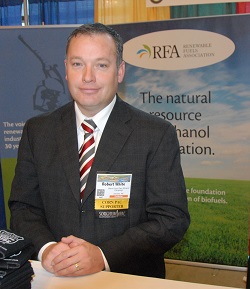Delivery giant UPS is expanding its commitment to propane. The company has announced plans to purchase 1,000 propane delivery trucks and will also install 50 fueling stations at UPS locations. The investment in propane vehicles and infrastructure is nearly $70 million.
The expanded propane fleet will replace gasoline and diesel fueled vehicles in many rural areas in Louisiana and Oklahoma. The company says trucks along these rural routes can travel up to 200 miles on a tank of propane. The trucks will beginning hitting the roads my mid-year. UPS is considering adding propane trucks to other states.
 “The UPS alternative fuel strategy is to invest in the most environmentally friendly and economical energy sources,” said David Abney, UPS chief operating officer. “Propane meets those criteria as a clean-burning fuel that lowers operating costs and is readily accessible, especially on rural routes in the United States. States that attract this type of investment with tax incentives and grants will factor into the UPS deployment strategy.”
“The UPS alternative fuel strategy is to invest in the most environmentally friendly and economical energy sources,” said David Abney, UPS chief operating officer. “Propane meets those criteria as a clean-burning fuel that lowers operating costs and is readily accessible, especially on rural routes in the United States. States that attract this type of investment with tax incentives and grants will factor into the UPS deployment strategy.”
UPS tested 20 propane-powered brown delivery trucks this past winter in Gainesville, Georgia, and expanded its order with Freightliner Custom Chassis Corp. UPS uses a “rolling laboratory” approach to test different fuel sources and technologies according to their route characteristics. The new propane fleet is expected to travel more than 25 million miles and to displace approximately 3.5 million gallons of conventional gasoline and diesel per year.
“The opportunity to road test new propane vehicles and fueling equipment with one of the most sophisticated fleets in the country is a major milestone for the propane industry,” said Roy Willis, president and CEO of Propane Education & Research Council (PERC). UPS and PERC worked with equipment manufacturers to secure certifications with the EPA and California Air Resources Board. “This announcement is the culmination of many entities bringing together the best in propane technology to achieve the greatest economic and environmental results.”
UPS has one of the largest alternative fuel fleets in the country.










